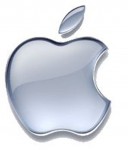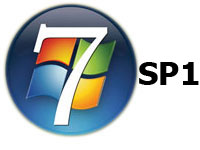 IPv6 isn’t a very elegant name but it’s coming and what it looks like is this: 2001:0db8:85a3:0000:0000:8a2e:0370:7334
IPv6 isn’t a very elegant name but it’s coming and what it looks like is this: 2001:0db8:85a3:0000:0000:8a2e:0370:7334
Ok that was just an example and probably didn’t scare you but if you remember the old IP addresses.. you know 192.168.16.100 and the like, well that monstrosity above will be replacing your old IP, eventually.
So what does that mean to you? Well the last free blocks of top level IPv4 were assigned in February 2011. Many are still unused all over the world but we are now officially out of ‘new’ blocks to give away. NAT (network address translation) gave us years of breathing room using ‘internal’ IP addresses (from your server, firewall or router) but with phones, computers and even refrigerators wanting an IP we are running/ran out.
The upgrades have been underway for years in the infrastructure but most ISPs have been dragging their heels. For most businesses it means a few updates on your software, a new router or server and maybe some bad days trying to figure out why a webpage won’t load. That is once the ISPs are finally forced to move over to IPv6 (or at least make it a working option). If you want to read more try these:
Don’t worry the internet won’t crash, end or put up toll booths (we hope). IPv6 will help control spammers and hackers better and take the load off the hardware in many cases. Your business might even be able to get its own “official” subnet to identify your gear/phones/computers from everyone elses.
It won’t be easy or painless but when the time comes the change will probably be worth all the effort, just thought you should know.
 RAT employs client-server program that communicates to its victim’s machine through its trojan server. The server application is installed on the victim while the client application is on the managing side.
RAT employs client-server program that communicates to its victim’s machine through its trojan server. The server application is installed on the victim while the client application is on the managing side.

 As you may remember the system requirement from XP to Vista meant you had to buy a new machine and be prepared for it to actually perform worse than your older XP computer. Luckily Windows 7 gained some performance back but with the 64bit version you can upgrade easily and efficiently for less than $400 (not including software).
As you may remember the system requirement from XP to Vista meant you had to buy a new machine and be prepared for it to actually perform worse than your older XP computer. Luckily Windows 7 gained some performance back but with the 64bit version you can upgrade easily and efficiently for less than $400 (not including software). Microsoft released the first official service pack for Windows 7 today. This is an important update that includes previously released security, performance, and stability updates for Windows 7. SP1 also includes new improvements to features and services in Windows 7, such as improved reliability when connecting to HDMI audio devices, printing using the XPS Viewer, and restoring previous folders in Windows Explorer after restarting.
Microsoft released the first official service pack for Windows 7 today. This is an important update that includes previously released security, performance, and stability updates for Windows 7. SP1 also includes new improvements to features and services in Windows 7, such as improved reliability when connecting to HDMI audio devices, printing using the XPS Viewer, and restoring previous folders in Windows Explorer after restarting.